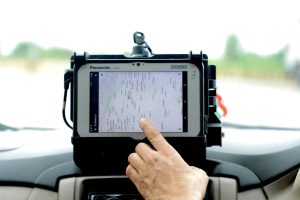Revolutionary Sensors Shaping the World of Fitness Trackers
Fitness trackers have revolutionized the way we view and track our fitness goals. With advancements in technology, these wearable devices have become increasingly popular in recent years. However, what truly sets these gadgets apart are the revolutionary sensors that are shaping the world of fitness trackers. These powerful sensors allow for more accurate and detailed tracking of our physical activity, giving us a deeper understanding of our health and fitness. In this article, we will dive into the world of fitness trackers and explore the ground-breaking sensors that are making fitness tracking more efficient and effective than ever before.
The Rise of Fitness Trackers
Fitness trackers, also known as activity trackers, are wearable devices that track your physical activity, heart rate, sleep patterns, and more. They are designed to provide real-time feedback, motivating users to achieve their fitness goals and maintain an active lifestyle. These devices have become an essential tool for fitness enthusiasts, but their popularity has expanded beyond hardcore athletes to everyday individuals looking to improve their health.
According to a report by Grand View Research, the global fitness tracker market size is expected to reach $9.7 billion by 2027. This massive growth can be attributed to the increasing focus on health and fitness, rising awareness about preventive healthcare, and advancements in technology. Among these technological advancements are the revolutionary sensors that have elevated fitness tracking to a whole new level.
The Power of Optical Sensors
Heart Rate Monitoring
One of the most critical sensors found in fitness trackers is the optical sensor. These sensors use light to measure the amount of blood flowing through your capillaries. This allows for continuous and accurate heart rate monitoring – a vital feature for tracking physical activity. Unlike traditional heart rate monitors that require a chest strap, fitness trackers with optical sensors can capture your heart rate through your wrist, making them more convenient and comfortable to use.
Not only do optical sensors provide a more effortless way to track your heart rate, but they also offer more detailed insights. They can detect changes in your heart rate throughout the day, giving you a better understanding of how your body responds to different activities and stress levels. This data can help you adjust your workouts and make more informed decisions about your health.
Blood Oxygen Saturation Monitoring
Another significant development in fitness tracking is the introduction of SpO2 monitoring. This sensor uses infrared light to measure the amount of oxygen in your blood, giving you an SpO2 reading. This reading indicates how much oxygen is being carried in your blood and how well it is being delivered throughout your body. Monitoring your blood oxygen saturation can help you detect early signs of respiratory or heart-related issues and make necessary lifestyle changes.
The Impact of Accelerometers
Step and Distance Tracking
Accelerometers are another crucial sensor in fitness trackers. These tiny sensors measure acceleration forces and movement, allowing them to track your steps and distance traveled. Adding this feature to fitness trackers has made them an excellent tool for monitoring physical activity, especially for individuals looking to increase their daily steps or distance.
Another exciting feature of accelerometers is their ability to track your stride length and running cadence. This information is beneficial for runners who want to improve their speed, technique, and reduce the risk of injury. With this data, you can tailor your training to achieve your desired results.
The Future of Fitness Trackers
The advancements in sensors have significantly improved the accuracy and functionality of fitness trackers, but this is only the beginning. With the continuous evolution of technology, we can expect to see even more innovative sensors in future fitness trackers, providing us with a more comprehensive picture of our health and fitness.
Some of the developments on the horizon include temperature sensors, sweat sensors, and even sensors that can analyze your posture. These sensors have the potential to take fitness tracking to a whole new level and further enhance our understanding of our bodies.
In Conclusion
The revolutionary sensors found in fitness trackers have transformed the way we monitor our physical activity and overall health. From heart rate and blood oxygen saturation to steps and distance tracking, these sensors provide us with detailed insights that can help us improve our fitness journey. With the endless possibilities for future sensor development, the future of fitness tracking is undoubtedly exciting. So, let’s embrace these revolutionary sensors and pave the way for a healthier and more active lifestyle.









